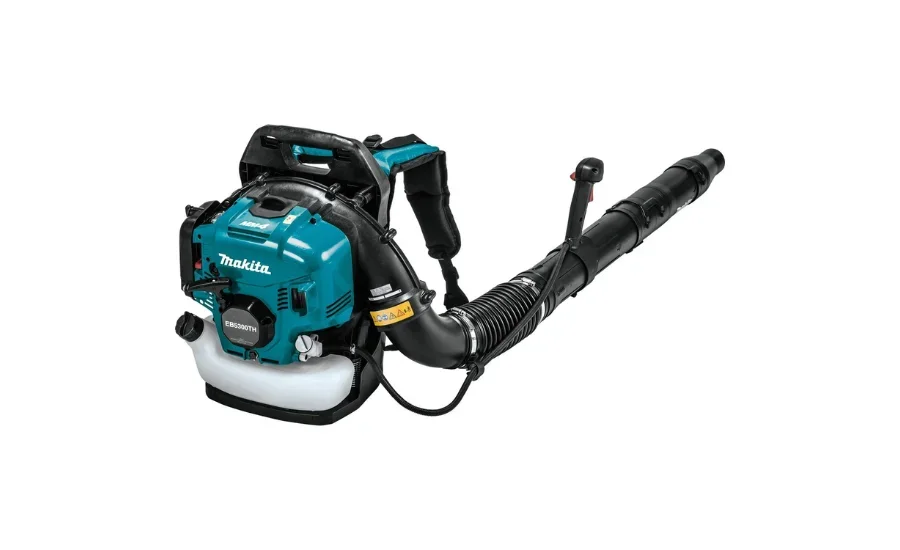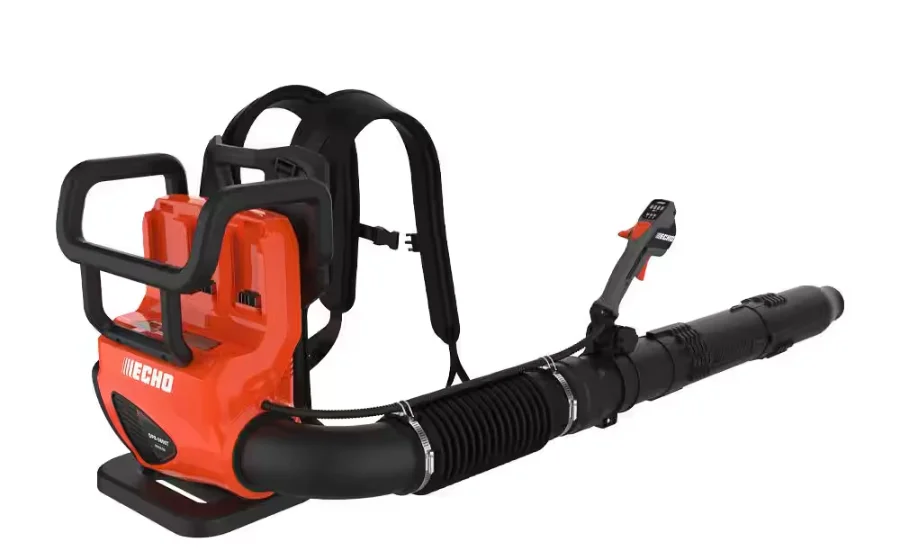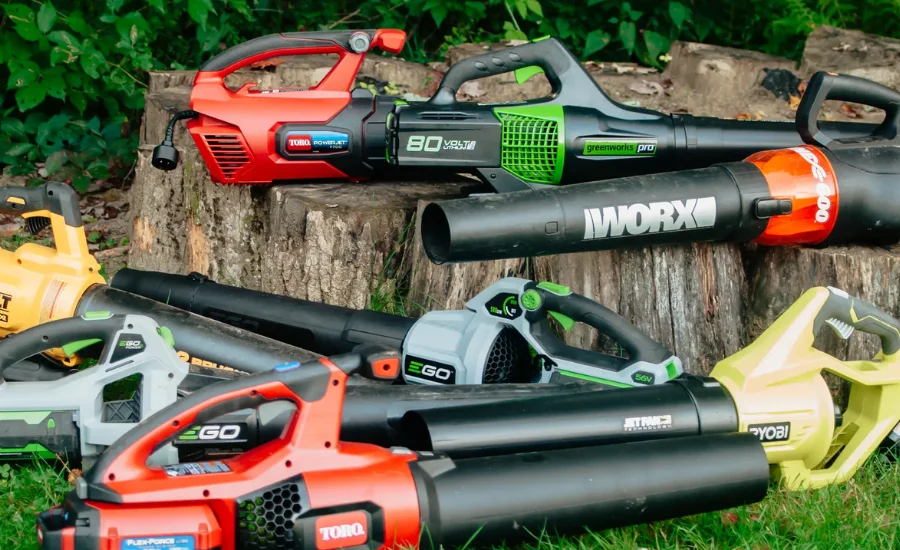Can You Use A Leaf Blower With Eusphatian Tube Dysfunction: Safety Tips And Alternatives
Can You Use A Leaf Blower With Eusphatian Tube Dysfunction When the tiny tubes that connect the back of the neck to the middle ear malfunction, it is known as Eustachian Tube Dysfunction (ETD). These tubes are in charge of balancing the pressure inside the ears and removing excess fluid.When affected by ETD, individuals may experience sensations of fullness, popping sounds, or hearing difficulties. ETD can be triggered by common factors like allergies, sinus infections, colds, or changes in altitude, such as during air travel.
Using loud machinery, such leaf blowers, might make the symptoms of ETD worse. These instruments can cause extreme loudness and air pressure, which can aggravate the condition by straining the ears. Even little adjustments to ear pressure or exposure to loud noises can cause discomfort, ear pain, or transient hearing loss in people with ETD. This makes tasks that involve loud machinery more challenging for individuals managing ETD. Understanding the potential risks and ways to mitigate them is crucial when using equipment like leaf blowers in these circumstances.
Understanding Eustachian Tube Dysfunction (ETD): Causes, Symptoms, and Management

When Can You Use A Leaf Blower With Eusphatian Tube Dysfunction the tiny tubes that link the back of the throat to the middle ear become clogged or malfunction, it is known as Eustachian Tube Dysfunction (ETD). These tubes are essential for controlling ear pressure and removing fluid from the ear, which promotes balance, particularly when driving or flying at high altitudes.
When the Eustachian tubes are not functioning correctly, individuals may experience discomfort, muffled hearing, or even ear pain. Common causes of ETD include allergies, sinus infections, colds, and anatomical issues. Symptoms often include a feeling of fullness in the ear and difficulty hearing clearly.
Though ETD might seem like a minor inconvenience, it can significantly affect daily life, especially in situations that require focus on sounds around you. Understanding ETD and its effects is key to managing the condition and maintaining ear health effectively.
Eustachian Tube Dysfunction (ETD): Causes and Effects
The condition known as Eustachian Tube Dysfunction (ETD) is caused by blockages or improper opening of the tiny tubes that run from the back of your throat to your middle ear. These tubes are essential for controlling ear pressure and removing extra fluid. Pressure can build up in the ears when they don’t work properly, which can cause a fullness or blockage sensation.
Several factors can contribute to ETD, including allergies, colds, sinus infections, or rapid changes in altitude, such as during air travel or driving through mountainous areas. Any condition that leads to swelling or congestion around the tubes can trigger ETD, affecting your ear’s ability to maintain proper balance and hearing clarity.
Understanding How Leaf Blowers Work: Types, Features, and Functionality
Leaf blowers transport material such as leaves and grass clippings by creating a strong stream of air. They run on an internal fan, which is driven by either a gas-powered engine or an electric motor.
When Can You Use A Leaf Blower With Eusphatian Tube Dysfunction the fan is turned on, it spins quickly, creating fast-moving air that is channeled through a small nozzle. The user may effectively remove leaves and other debris with little effort thanks to this concentrated airflow.
Handheld blowers are lightweight and easy to carry, ideal for smaller tasks. Backpack blowers, on the other hand, are designed for larger areas and are worn on the back to evenly distribute the machine’s weight, reducing fatigue during extended use.
Most leaf blowers include adjustable speed settings, allowing users to control the force of the air based on their specific needs. Some models even offer a mulching feature, which shreds leaves as they are blown, reducing the volume of debris and simplifying disposal.
Common Symptoms of Eustachian Tube Dysfunction (ETD)
The common symptoms of Can You Use A Leaf Blower With Eusphatian Tube Dysfunction (ETD) are a number of unpleasant ones. These may include popping or crackling noises together with a continuous sensation of fullness or pressure in the ears. The intensity of ear pain varies based on the specific situation. Tinnitus, a condition in which there is a buzzing or ringing sound in the ears, can also affect some persons. Temporary hearing loss due to ETD may result in sounds seeming muted or far away. The underlying cause and severity of the disease determine how long these symptoms remain, which can range from a few hours to many weeks.
Impact of Eustachian Tube Dysfunction (ETD) on Daily Life
Eustachian Tube Dysfunction (ETD) can significantly disrupt everyday activities, particularly those involving pressure changes. Simple actions like diving, flying, or even taking an elevator can intensify discomfort due to the inability of the ears to equalize pressure properly. Additionally, noisy environments, such as concerts or bustling streets, often worsen ETD symptoms, making it difficult to focus or enjoy social events. Individuals with ETD are often more sensitive to loud sounds, leading to anxiety about engaging in activities that could exacerbate their condition. This heightened sensitivity can make normal social interactions and recreational activities more stressful for those affected.
The Impact of Leaf Blowers on Eustachian Tube Dysfunction (ETD)

Using a leaf blower can exacerbate Eustachian Tube Dysfunction (ETD) because of the equipment’s loud noise and fluctuating air pressure. The powerful airflow and loud noise levels of a leaf blower may cause problems for your ears’ pressure-balancing Eustachian tubes.
For individuals with ETD, the use of such equipment can intensify symptoms like ear discomfort, pressure, or blockage. The powerful roar of a leaf blower could worsen feelings of fullness in the ears or even cause pain. If you are already dealing with ear issues due to ETD, it’s important to monitor how using loud, pressure-generating tools like leaf blowers affects your comfort and overall ear health. Adjusting usage or wearing protective equipment may help minimize discomfort while completing tasks like yard work.
The Impact of Leaf Blowers on Eustachian Tube Dysfunction: Understanding the Risks
It can be especially difficult for people with Eustachian Tube Dysfunction (ETD) to use a leaf blower. Can You Use A Leaf Blower With Eusphatian Tube Dysfunction ETD symptoms including increased ear fullness, pain, and pressure might be made worse by the devices’ strong noise and forceful air pressure. This may greatly exacerbate the Eustachian tubes’ precarious equilibrium, making the discomfort more intense.
The issue can get much worse for people who have tinnitus, a frequent ailment linked to ETD. Leaf blowers can produce high decibel levels that amplify ringing or buzzing sounds in the ears, making it more difficult to focus, sleep, or unwind on a regular basis. This extra pressure may worsen already existing stress and anxiety, which would be detrimental to general wellbeing.
Moreover, leaf blowers are known for their loud operation, which poses a considerable risk to hearing health. The noise levels are often so high that they can lead to hearing damage, especially for individuals with existing ear issues. Extended exposure to such loud sounds can cause both temporary and permanent hearing loss, highlighting the importance of taking preventive measures if you need to operate such equipment.
In summary, using a leaf blower while dealing with ETD can lead to worsened symptoms, increased tinnitus, and a heightened risk of hearing damage. It’s crucial to consider these factors and take appropriate precautions to safeguard your ear health.
Ensuring Safety and Comfort When Using a Leaf Blower with Eustachian Tube Dysfunction
If you have Can You Use A Leaf Blower With Eusphatian Tube Dysfunction (ETD) and need to use a leaf blower, it’s essential to prioritize your comfort and safety to prevent exacerbating your condition. Start by wearing adequate ear protection. This can significantly reduce the impact of the loud noise generated by the blower, helping to protect your ears from further strain.
Timing your use of the leaf blower is also crucial. Aim to avoid operating it during peak allergy seasons or on windy days, as airborne debris can increase pressure on your ears and worsen your symptoms.
Maintaining a safe distance from high-noise areas and avoiding zones with heavy equipment can help minimize exposure to excessive sound levels. Whenever feasible, choose leaf blower models with quieter operation to further lessen the chance of causing irritation to your ETD.
Drinking lots of water will help you stay hydrated, which is important for the health of your ears when working outside. Furthermore, if you begin to feel any discomfort in your ears, it’s critical to take rests.
Finally, always seek advice from a healthcare professional before engaging in outdoor tasks that might affect your condition. This ensures you are well-prepared and able to manage your activities safely and effectively.
Managing Balance Concerns When Using a Leaf Blower with Eustachian Tube Dysfunction
Your sense of balance may be affected by Eustachian Tube Dysfunction (ETD), which can cause unsteadiness or dizziness. Using a leaf blower can make these balance problems worse by causing vibrations, which raises the possibility of mishaps or falls, particularly while working on uneven ground or moving around.
To Can You Use A Leaf Blower With Eusphatian Tube Dysfunction safeguard your well-being, it’s crucial to take preventive measures when using a leaf blower. Consider alternative tools or methods that minimize the risk to your balance. Ensuring a stable and secure environment while operating the blower is essential to avoid accidents and maintain your safety.
Alternative Yard Maintenance Solutions for Those with Eustachian Tube Dysfunction
If using a leaf blower is problematic due to Eustachian Tube Dysfunction (ETD), there are several effective alternatives to consider that can minimize discomfort and still keep your yard in good shape.
Traditional rakes are a straightforward option, providing effective debris removal while offering some physical exercise. They are gentle on the ears and allow you to work at your own pace.
Another eco-friendly alternative is a vacuum mulcher. This device not only collects leaves but also shreds them into mulch, which can be used to enrich your garden soil, making it a practical and environmentally friendly choice.
Lawn sweepers are also worth considering. These devices attach to your mower and collect leaves as you cut the grass, efficiently handling debris without generating excessive noise.
For smaller areas or flower beds, a handheld leaf blower can be a good choice. These models typically produce less noise and offer greater control, making them suitable for those with ETD.
The best course of action may be to hire expert landscapers if the task appears too big for you to handle. They save you time and lessen the strain on your ears by managing yard maintenance effectively with their array of tools and experience.
Managing Leaf Blower Use to Protect Your Eustachian Tubes

Reducing the amount of time you spend with a leaf blower will help you manage your Eustachian Tube Dysfunction (ETD) symptoms. Divide the effort into smaller, more manageable periods rather to taking on the entire project at once. Throughout these periods, give yourself plenty of breaks so your ears can recuperate.
This strategy helps in reducing the accumulation of pressure and alleviates the strain on your Eustachian tubes, ensuring a more comfortable and safer experience.
Final Words
When you have Eustachian Tube Dysfunction (ETD), you need to use a leaf blower with caution and cautious thought. The blower’s noise and vibrations have the potential to worsen the symptoms of ETD by raising ear pressure, producing discomfort, and disrupting balance. If you choose to use a leaf blower, it’s important to wear the appropriate ear protection, set a time limit for use, and take regular pauses to reduce strain on your ears. As an alternative, you might want to look into more manageable, quieter appliances like vacuum mulchers, lawn sweepers, or rakes to avoid making your situation worse.Always consult with a healthcare professional to ensure that any yard work activities align with your specific health needs and to safeguard your ear health effectively.
FAQ’s
1. Can I use a leaf blower if I have Eustachian Tube Dysfunction (ETD)?
Using a leaf blower with ETD can be challenging due to the loud noise and vibrations, which may worsen your symptoms. It’s crucial to use proper ear protection, limit your exposure, and take frequent breaks. Consider alternative tools if possible.
2. How can a leaf blower impact my ETD symptoms?
The noise and vibrations from a leaf blower can increase ear pressure and strain your Eustachian tubes, leading to more pronounced symptoms such as fullness, pain, and balance issues.
3. What precautions should I take if I need to use a leaf blower?
To minimize the impact on your ETD, wear high-quality ear protection, choose quieter models if available, and break the task into smaller segments. Take regular breaks to reduce ear strain.
4. Are there alternative tools to using a leaf blower?
Yes, consider using traditional rakes, vacuum mulchers, or lawn sweepers. These options are generally quieter and can help you manage yard work without exacerbating ETD symptoms.
5. What should I do if I experience discomfort while using a leaf blower?
If you experience discomfort, stop using the leaf blower immediately. Take a break to rest your ears and evaluate if the task can be completed with less intense equipment or methods.
6. Should I consult a healthcare professional before using a leaf blower?
Yes, it’s a good idea to consult with a healthcare professional before using a leaf blower or engaging in activities that could affect your ETD. They can provide personalized advice and ensure your activities are safe for your condition.
7. How can I manage balance issues while using a leaf blower?
If you have balance issues due to ETD, be cautious when using a leaf blower. Ensure you are working on stable ground and consider using quieter equipment to reduce the risk of exacerbating your balance problems.
For More Information Check This Thrill Rise






